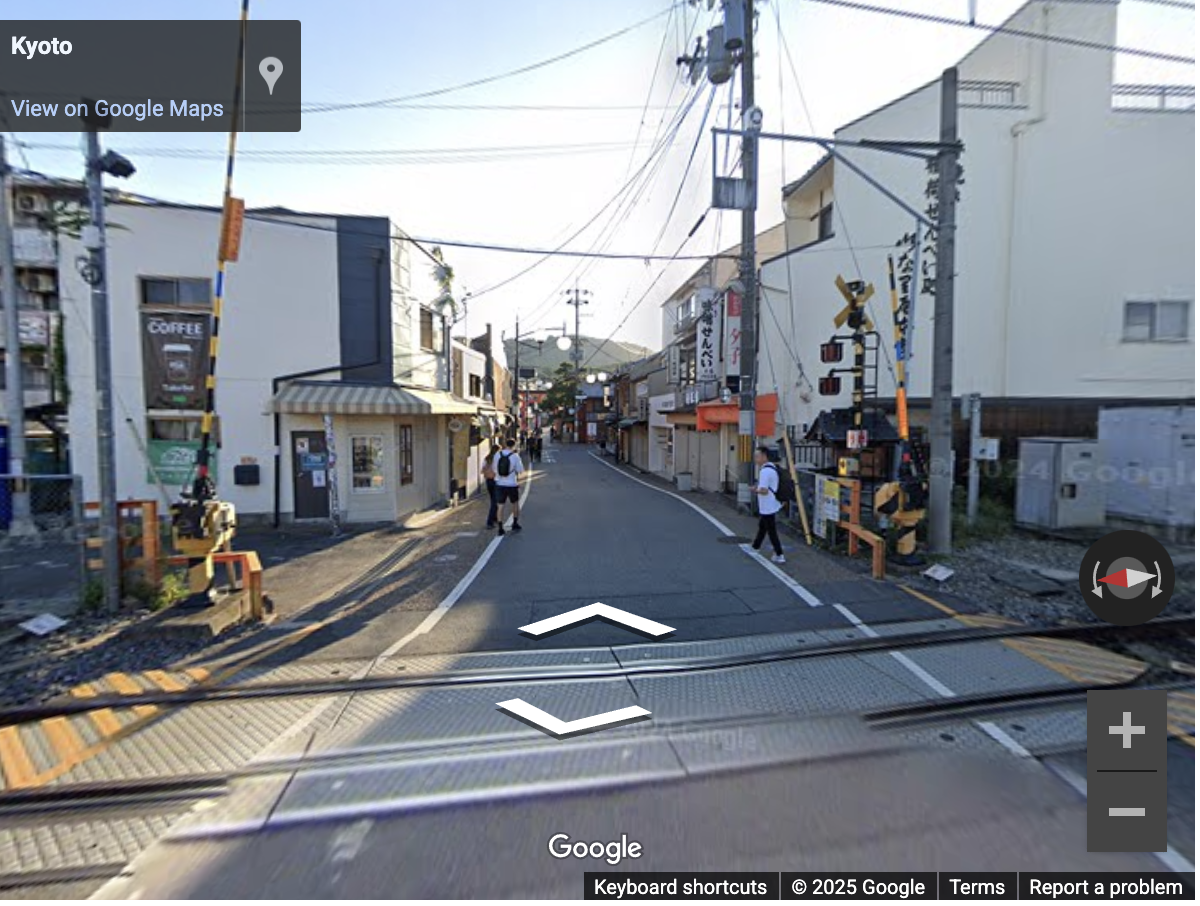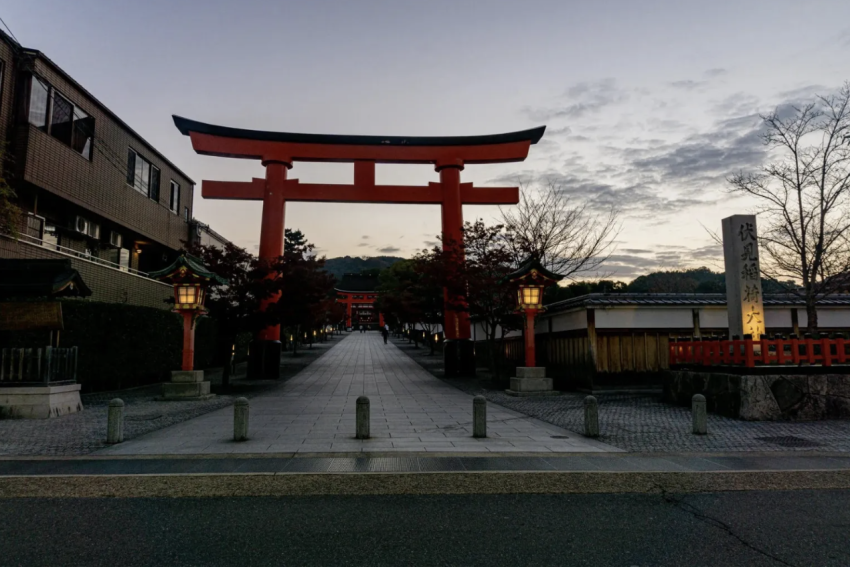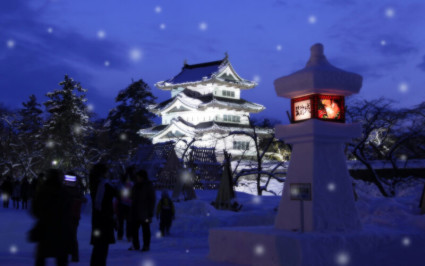Kyoto has long been feeling the strain of overtourism, which not only places a burden on tourist sites but local residents, who find it difficult to go about their daily lives. This struggle was clearly evident near Fushimi Inari Taisha last week, when a dangerous situation arose at a railway crossing.
On January 26, a large group of tourists were making their way over the crossing when the alarm began to sound, indicating the imminent arrival of an oncoming train. When the alarm rings out at a Japanese railway crossing such as this one, the poles lower automatically to prevent people from entering the crossing, but on this particular day, tourists ignored all the warning signs, continuing over the tracks as the poles jostled around their heads.
▼ This report shows the chaotic scene as it unfolded.
With no sign of the crowd abating, the emergency button was pressed, alerting the driver of the oncoming train, who stopped the vehicle. As a result, the train was delayed for roughly 20 minutes, inconveniencing commuters.
Thankfully, the quick-thinking actions of whoever pressed the emergency button helped to prevent a major incident, but according to local residents and shopkeepers, overcrowding at this site isn’t an anomaly, with tourists impeding the proper functioning of the crossing numerous times every week.
Kyoto City employs security guards to help control the crowds here at busy times such as New Year’s and sakura cherry blossom season, but there are no guards overseeing the site at this time of year. This is proving to be problematic, though, as the end of January and early February coincides with the Chinese New Year holiday period, when Japan sees a large uptick in Chinese tourists, and reports say the voices in the crowd at the railway crossing were heard to be Chinese.
▼ This site becomes incredibly congested as it’s located at the start of the approach to the shrine, which has a history stretching back more than 1,300 years.

According to reports, the congestion that occurred here on January 26 was particularly bad as it wasn’t just one group but two groups trying to cross, each from either side, at the same time. Rather than stick to one side of the street, tourists on both sides walked freely across, bumping into each other as they did so, causing confusion that made it nearly impossible to safely cross over to the other side.
▼ This cued-up section of the report shows how the two groups collided, causing the congestion.
It’s not just people making their way over the tracks here, as regular vehicles also share the narrow road. When crowds like this gather, it becomes difficult for cars to cross, as evidenced in the above report, where a taxi could be seen barely making it to the other side of the crossing before the pole came down on the boot of the vehicle.
With problems occurring at the railway crossing several times a week, this is an issue that clearly needs to be addressed. While some might argue that Kyoto City should employ security guards at the site full-time, with so many popular tourist sites scattered around the area, there’s only so much the city can do. Perhaps a more feasible solution to the problem would be to post signs at the crossing to indicate which side of the road pedestrians should stand stand, to prevent foot traffic from colliding with each other. However, walking two-or-three-abreast might result in large groups being split in two, and with wait times at the crossing being roughly seven minutes, this could only exacerbate the problem.
Perhaps an open discussion between the city, the railway operator and tour guides would be the most effective solution. Clear communication between all parties could result in tour groups being better equipped to time their crossings to avoid the passing trains, leading to a happy compromise for everyone involved.
Source: FNN via Yahoo! News Japan
Read more stories from SoraNews24.
-- Bad tourist manners at Mt Fuji Lawson photo spot prompts Japanese town to block view with screens
-- Explore Kyoto tourist site Fushimi Inari Taisha shrine with Unreal Engine 4 【Video】
-- See a whole other side of Kyoto in this beautiful, quintessentially Japanese train, coming soon
- External Link
- https://soranews24.com/2025/02/04/tourists-in-kyoto-cause-chaos-at-railway-crossing-near-fushimi-inari-taisha/
















15 Comments
Login to comment
Harry_Gatto
Stupid behaviour from people old enough to know better.
Newgirlintown
Can we please discuss this kind of thing without it descending into racism against Chinese people.
tamanegi
On January 26th...
tamanegi
I'm more interested in knowing about the man with a knife in Osaka Station this morning. Lift your game JT.
Tokyo Guy
A stronger yen and general education (everywhere) about how to be a decent tourist would go a long way to preventing this kind of scene.
リッチ
More tourist bashing. 99.9999999% are among people. But yea let’s focus on the 0.0000001%. Typical
Wasabi
リッチ Please watch the video before commenting.
Meiyouwenti
“Can we please discuss this kind of thing without it descending into racism against Chinese people.”
Pointing out the fact that many Chinese tourists visit Kyoto during their lunar New Year holidays is not racism.
therougou
At my local crossings, there are always a line of people walking and riding their bike on the wrong side. So I think they need to teach Japanese to follow the rules, first.
therougou
There seems to be an endless supply of old dudes standing outside building parking lots, directing traffic. How about hiring a few of them?
Strikebreaker555
Before anyone gets upset over foreign tourists. I think it is important to remember that 70% of al inbound tourists to Kyoto or any other famous landmarks in Japan, are actually native Japanese. I saw a news report from NHK stating that inland tourism has seen a surge due to the Yen's depreciation and lackluster wage growths the recent years.
So keep that in mind before we start blaming everything on foreign tourists.
Geeter Mckluskie
2024 saw 37 million foreign visitors to Japan
https://asia.nikkei.com/Business/Travel-Leisure/Foreign-tourists-to-Japan-hit-record-37m-in-2024-up-47-on-weak-yen
Geeter Mckluskie
Two things can be true at the same time. That some Japanese fail to follow rules doesn't give tourists carte blanche to have at it with no regards to rules or public behaviour.
I'veSeenFootage
The issue isn't really tourists per se, nor their origin, but simply the fact that the vast majority of them now absolutely need to do the same unoriginal selfies for their instagrams. That's why huge lines are forming and traffic is disrupted.
Newgirlintown
Blame the foreigners as usual.
wallace
In 2023, 75.18 million people visited Kyoto Prefecture, Japan, and 50.28 million visited Kyoto City. The ratio of international guest nights largely rose from 37.5% in March 2023 to 55.1% in April, the first over 50% since October 2019.